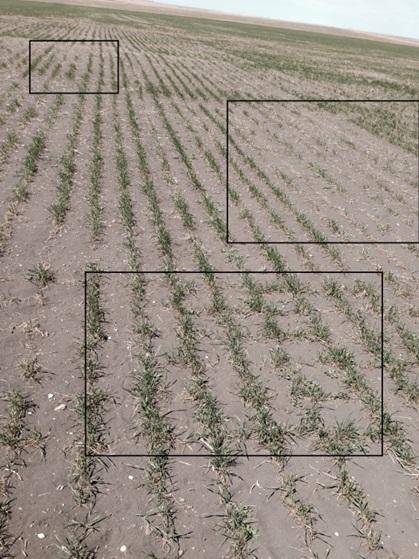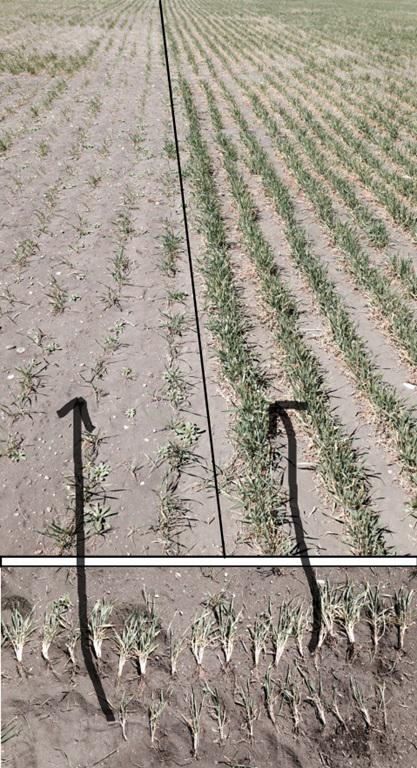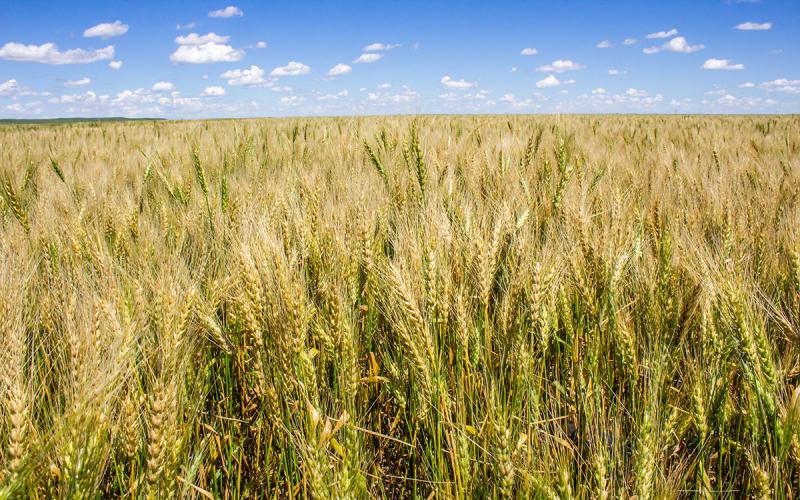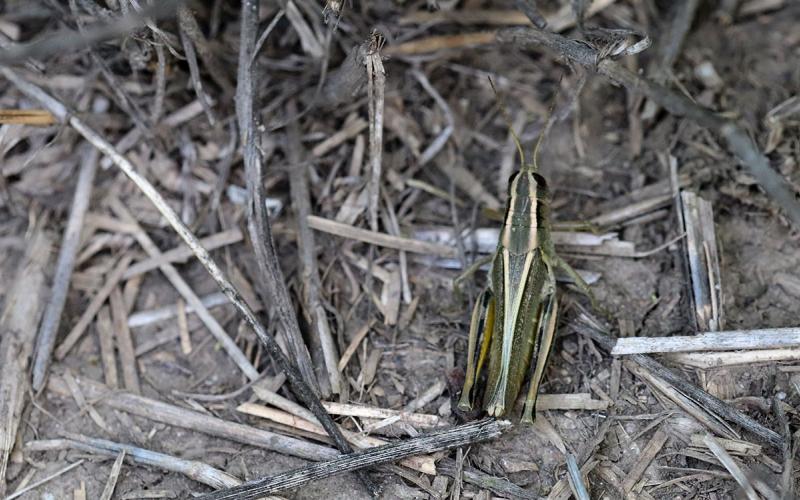Written collaboratively by Christopher Graham and Bob Fanning, former SDSU Extension Plant Pathology Field Specialist.
From freak snow storms to sub-zero temperatures and on to a recent lack of moisture and a cool spring, the climate in South Dakota has left many winter wheat growers and agronomists wondering about the health of their stands. So the question of abandoning fields and planting a warm season crop arises and the answer is often “yes, if…” or “no, but…” The truth is that winter weather left a lot of patchy snow, meaning that some areas were insulated from frigid temperatures while others were not. If winter wheat was planted with adequate growth and tillering before vernalization, the stand might be okay. If not, wheat stands may appear patchy and thin. An inspection of three of SDSU West River Winter Wheat variety trial sites (Sturgis, Wall and Kennebec) demonstrates this.

A typical approach to assess winter wheat survival is to count the number of plants (whole plants, not tillers) in a square foot of row. We plant on 10” rows, which equals 1.2 ft. of row. When averaged over five counts at each site, Sturgis had 16 plants/ft2, Wall had 14 plants/ft2 and Kennebec had 12 plants/ft2. One general rule of thumb is that stands averaging less than 12-15 plants/ft2 may be good candidates for replanting a warm season crop. There are several problems with this assumption. First, this threshold assumes a specific, estimated, potential yield. In lower yielding situations, 12 plants/ft2 with 4 tillers (a conservative estimate) and 25 kernels/head could theoretically produce 52 bu/ac; a reasonable yield for some parts of South Dakota. And second, the difficulty in this decision is whether the count adequately represents the field as a whole. Our Kennebec site is a good example. The numbers for five counts were: 10, 16, 8, 6 and 18 plants/ft2. The counts reflect the stand variability throughout the plots and can be seen in Figure 1.

To date the early spring weather has been relatively cool and wet. These conditions are likely to prevail with the expectation of a strong El Niño. This variety trial was planted in late September and given climate expectations, a field in this condition may not be kept. On the other hand, if we experience some warmer weather to accompany recent precipitation, wheat has the ability to compensate thin stands through increased tiller production. Interestingly, the field surrounding the research plots was planted two weeks earlier and as Figure 2 indicates, conditions are quite different. Stand counts averaged closer to 15-20 plants/ft2 with 3-4 tillers per plant (versus 2 in the plots) and will likely have a profitable yield. This highlights the impact that planting date can have on overall yield. Ultimately, the choice to give up on a winter wheat field is difficult. Ideally, there would be more time to assess growth over the next few weeks. Growers don’t have that luxury given the closing planting window for many spring-planted crops and as such depend on the imperfect science of stand assessment. Further consideration must be given to the effect that replanting has on rotation. In the long run, it may be profitable to maintain a marginal wheat crop this year to preserve the benefits of a sustainable, multi-year cropping rotation.
For further reading, the University of Kentucky has a very good primer on stand assessment.


